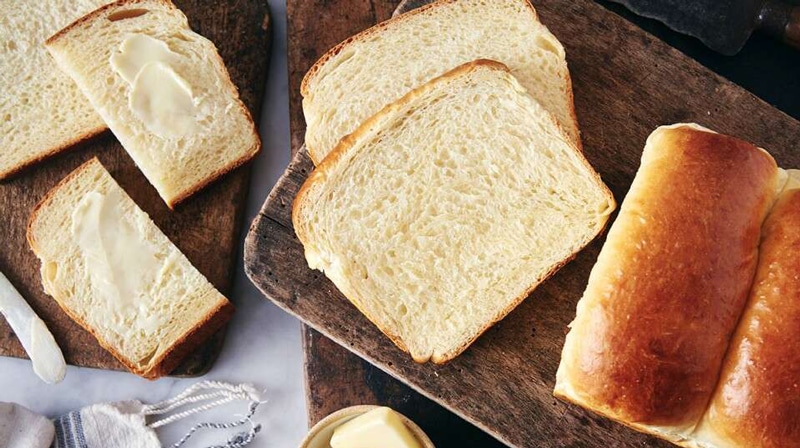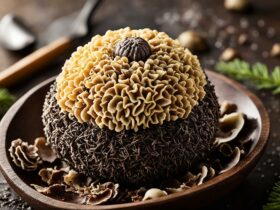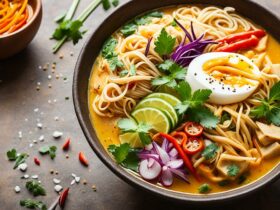Contents
Japanese cuisine is renowned for its exquisite flavors and meticulous attention to detail, and the same holds true for Japanese bread making. With a rich history and unique approach, the art of Japanese bread making has captured the hearts and taste buds of bread enthusiasts worldwide. In this article, napac.co.uk will explore the fascinating world of Japanese bread making, from its historical background to the techniques and ingredients used, as well as the aesthetic elements that make it truly exceptional.
Bread has become an integral part of Japanese cuisine since it was introduced by Portuguese missionaries in the 16th century. However, it was not until the late 19th century that Japan fully embraced bread making as a culinary art form. Japanese bread, often referred to as “pan” in Japanese, has its distinct characteristics that set it apart from its European counterparts. The art of Japanese bread making blends traditional techniques with modern innovations, resulting in a delightful array of flavors and textures.
Historical Background of Japanese Bread Making
Japanese bread making has its roots in the introduction of baking techniques by Portuguese missionaries. However, it wasn’t until the Meiji period in the late 19th century that bread gained popularity in Japan. As Japan opened its doors to Western influence, the demand for bread grew, leading to the establishment of the first Japanese bakery in 1874. Since then, the art of Japanese bread making has evolved, combining traditional techniques with a touch of Japanese creativity.The Unique Characteristics of Japanese Bread
Japanese bread is known for its soft, fluffy texture and slightly sweet taste. It is often lighter and less dense compared to European bread. This is achieved through specific techniques, such as the use of tangzhong or yudane, which involve pre-gelatinizing the flour to enhance its moisture-retaining properties. Another characteristic of Japanese bread is its beautiful, golden crust, achieved through careful baking techniques.Traditional Japanese Bread Recipes
Hokkaido Milk Bread
Hokkaido Milk Bread, also known as Shokupan, is a staple in Japanese households. It is characterized by its pillowy softness and rich, milky flavor. The bread is made using the tangzhong method, which involves creating a roux-like mixture of flour and water that is added to the dough. This technique contributes to its tender texture and prolonged freshness.Melon Pan
Melon Pan is a popular sweet bread in Japan, named for its melon-like appearance. It consists of a slightly sweet, cookie-like outer layer with a fluffy interior. The distinct crackled pattern on top resembles the skin of a cantaloupe, giving it its unique appeal. Melon Pan is often enjoyed as a snack or dessert, and its delightful combination of textures and flavors has made it a beloved treat in Japanese bakeries.
Anpan
Anpan is a classic Japanese bread filled with sweet red bean paste called “anko.” The soft and fluffy bread encases the sweet, velvety anko, creating a delightful contrast of textures and flavors. Anpan is a popular choice for breakfast or as a snack, and it exemplifies the fusion of Japanese and Western influences in Japanese bread making.Shokupan (食パン) คืออะไร ?
Modern Innovations in Japanese Bread Making
Japanese Bakery Culture
Japanese bakery culture has flourished over the years, with countless bakeries offering a wide variety of bread creations. From traditional Japanese bread to Western-inspired pastries, Japanese bakeries have become vibrant hubs of culinary innovation. They strive to cater to diverse tastes and preferences, constantly introducing new flavors and designs to captivate bread lovers.Shokupan and Variations
Shokupan, or Japanese milk bread, continues to be a favorite among bread enthusiasts. Its soft and fluffy texture makes it perfect for sandwiches and toast. Moreover, bakers have taken the art of shokupan to new heights by incorporating different fillings and flavors, such as matcha, chocolate, and even savory options like cheese or ham. These variations provide a delightful twist on the traditional Japanese milk bread.Sweet and Savory Bread Creations
Japanese bread makers have also expanded their repertoire to include a wide range of sweet and savory bread creations. From fruit-filled danishes to curry-filled buns, the creativity knows no bounds. Japanese bread has become a canvas for culinary experimentation, resulting in innovative combinations that surprise and delight the taste buds.Techniques and Ingredients Used in Japanese Bread Making
Tangzhong Method
The tangzhong method is a key technique in Japanese bread making. It involves creating a roux-like mixture by heating flour and water together, which is then incorporated into the dough. This technique increases moisture retention, resulting in bread with a softer texture and improved shelf life.Use of Yudane
Yudane is another technique employed in Japanese bread making. It involves mixing boiling water with a portion of the flour, creating a gel-like mixture. The yudane is then combined with the remaining ingredients to form the dough. This method enhances the bread’s moisture and contributes to its softness.Japanese Flour Types
Japanese bread makers often utilize different types of flour to achieve specific textures and flavors. For instance, high-protein bread flour is commonly used for creating a light and fluffy crumb, while cake flour may be employed for a softer, tender texture. Japanese flour varieties are carefully selected to ensure the desired characteristics in the final product.The Role of Aesthetics in Japanese Bread Making
In addition to its delectable taste, Japanese bread is known for its aesthetic appeal. Bakers pay meticulous attention to details, creating bread that is visually pleasing. From intricately shaped rolls to beautifully scored patterns on the crust, every element is carefully crafted to elevate the bread-making experience. The artistry behind Japanese bread adds an extra layer of enjoyment and demonstrates the commitment to perfection.Health Benefits of Japanese Bread
Japanese bread often incorporates wholesome ingredients, such as whole grains and natural additives, making it a healthier choice compared to some Western bread varieties. Additionally, the use of tangzhong and yudane techniques enhances moisture retention, reducing the need for excessive amounts of butter or oil. As a result, Japanese bread can offer a satisfying and nutritious option for those seeking balance between taste and well-being.Conclusion
The art of Japanese bread making seamlessly combines tradition, innovation, and aesthetics to create bread that is not only delicious but also visually captivating. From the soft and fluffy Hokkaido Milk Bread to the delightful Melon Pan and Anpan, Japanese bread offers a wide array of flavors and textures to satisfy every palate. With its rich history, unique techniques, and constant evolution, Japanese bread continues to captivate bread lovers around the world.Are There Any Similarities Between Traditional French Desserts and Japanese Bread Making?
When it comes to traditional french desserts and Japanese bread making, there might not seem to be any similarities at first glance. However, both culinary arts prioritize precision and attention to detail. Whether it’s the intricate layers of a mille-feuille or the intricate shaping techniques used in Japanese bread making, both traditions celebrate the mastery of pastry and baking techniques.
FAQs
- Is Japanese bread similar to European bread?Japanese bread has its own distinct characteristics, such as a softer texture and slightly sweet taste. It differs from traditional European bread in terms of ingredients, techniques, and flavors.
- Are Japanese bread recipes difficult to make at home?While some Japanese bread recipes may require specific techniques, many are accessible to home bakers. With practice and attention to detail, anyone can enjoy the art of Japanese bread making in their own kitchen.
- Can I find Japanese bread outside of Japan?Japanese-style bakeries have gained popularity worldwide, and many countries now offer a variety of Japanese-inspired bread. Additionally, some recipes can be adapted to recreate the flavors of Japanese bread at home.
- Is Japanese bread healthy?Japanese bread often incorporates wholesome ingredients and techniques that promote moisture retention without excessive fat content. It can be a nutritious option when consumed as part of a balanced diet.
- What makes Japanese bread aesthetically pleasing?Japanese bread makers pay great attention to details, shaping and scoring the bread to create visually appealing patterns. The commitment to aesthetics adds to the overall enjoyment of Japanese bread.





